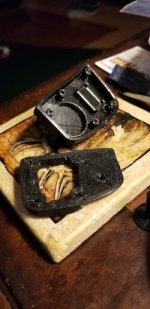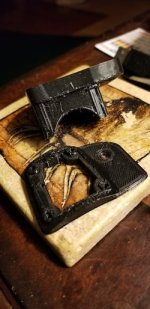rananna said:
@beemac, @casainho,
I compared the wireless remote color mixing on the board controller to the wireless remote
Mixing is definitely inferior at 3V than it is at 5V, probably due to the lower current
Also the perception of color mixing is definitely affected by light intensity.
Higher intensity=better color mixing.
Visually I think is important to not have much light, since the light is against our eyes and kind of blocks the light around us we should see - on the 860C display I have the need to put the brightness at min value at night and probably I would go even lower if possible. On the display we can switch between day / night but for simplicity I think we should use only a brightness value on the remote and so choose a lower value as possible. Maybe future versions can have a configuration for brightness value.
I 3D printed new parts with 0.2mm layer so I could have a better quality parts. I could go to 0.1mm layer but that would take to much time and I was in a hurry.
I blocked the brake wire with a small zip tie, so it will be hard to pull it to much up to damage:

It is hard to see but the battery thin wires are soldered - the power pins on the board are just on the direction of the green power wires. The brake wires were placed under the board so they are not visible.



Done!! Added a bit of transparent silicone on the LED hole. Later I want to put the same silicone between this 2 3D printed parts and on the hole of the brake wire, that way I will have a water prof wireless remote




















